Stomping at the Savoy
By Alan Zeffertt
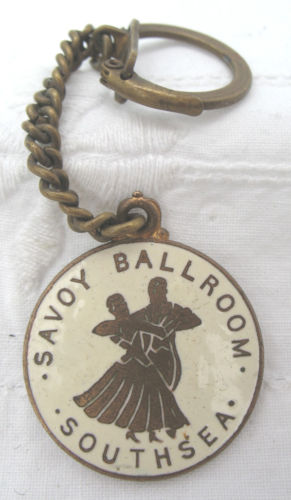
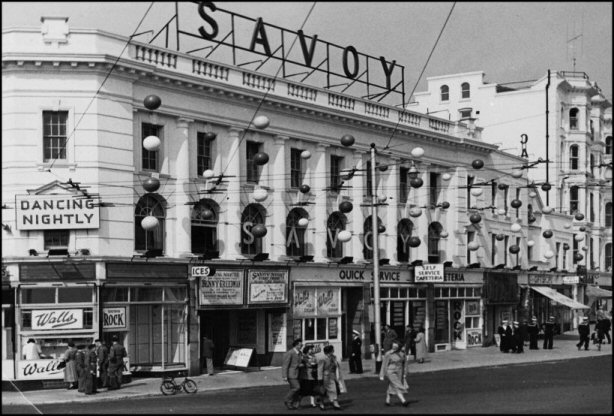 Sometimes on a warm summer evening, I stand on Southsea's Esplanade, facing what used to be the Savoy Ballroom, and memories of long-gone Friday nights come flooding back, as sharply and clearly defined as Ted Heath's trumpet section.
Sometimes on a warm summer evening, I stand on Southsea's Esplanade, facing what used to be the Savoy Ballroom, and memories of long-gone Friday nights come flooding back, as sharply and clearly defined as Ted Heath's trumpet section.
The place is called "5th Avenue" now and the music purveyed within obviously reflects the tastes of today's youth but gazing at that building, the vital hub around which my social life revolved. I hear only echoes of the great British orchestras of the late 1940s and early '50's. That was the time of my teens and twenties, when Friday night was "Radio Band Night".
The prime and most transparent reason to visit the Savoy was to dance and, indeed, the large, attractive hall contained a magnificent and spacious floor area but this was never the major attraction for me and my five close friends. We went, always, to meet girls and, sometimes, to listen to the music.
Few of us could master the intricacies of ballroom dancing and the garrulousness which has since become a somewhat irksome feature of my personality stemmed from the desperate need to counterbalance my disastrous performances on the floor with scintillating and witty chat. It required considerable courage for me to venture on to the parquet at all and this was obtained, prior to entering the Savoy, from the Victory Bar a few doors away. This blessed plot has endured numerous metamorphoses but has lately transmogrified into "Joanna's Disco".
At the Victory, we tanked up on light ale or the current "in" tipple, which was neat rum or rum with peppermint. Three or four of those at Is. 11d. a throw calmed the nerves and prepared me for the forthcoming Terpsichorean challenge, though it was often worthwhile lingering in the Victory to watch the action. The Friday clientele in this steamy bar invariably included a strong naval contingent of several nationalities, all of them targeted and swiftly ensnared by girls looking for a good time, a bad time, a husband or just an evening of free booze. Some of the girls were locals but many travelled in on bus and train lured by the sailors' traditional generosity with their freshly-loaded wallets and their desperate need for female company after the deprivations of a tour of sea duty.
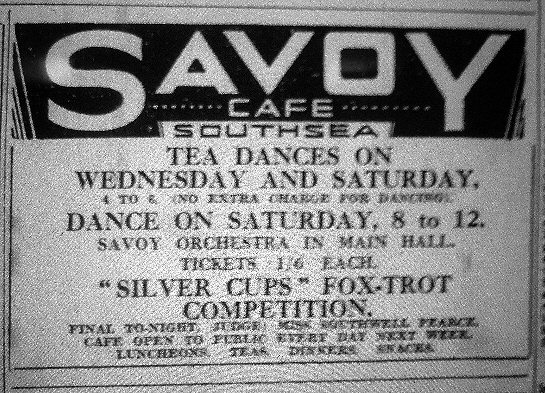 It wasn't a pretty sight as the evening wore on, the conversations growing louder and more bawdy, the arguments over individual claims to specific "birds" suggesting the possibility of physical confrontation.
It wasn't a pretty sight as the evening wore on, the conversations growing louder and more bawdy, the arguments over individual claims to specific "birds" suggesting the possibility of physical confrontation.
By then, though, we civvies had tottered upstairs and along to the Savoy, ready for the evening's primary entertainment. There, for three or four shillings entrance fee, we were regaled by a fascinating cross-section of Britain's finest big bands, which we rigidly categorised because they fulfilled quite different functions in our itinerary.
There were the commercial bands who played exclusively for dancing and eschewed the few jazzier items that may have been tucked away in the remote corners of their catalogue. In this category we included the likes of Joe Loss, Cyril Stapleton, Paul Fenoulhet and the Skyrockets, and Lou Preager, whom we ignored as musical entities. During their sets we circulated, prospected for talent, as we called it, maybe sloped off to the bar at the far end of the hall for another dose of courage, or chatted up an interested party.
The search for pulchritude was frequently conducted from the balcony that ran along the length of the building and faced the bandstand. From this aerial vantage point we built up a useful dossier of the girls who were unattached, looked available or seemed to be bored with their partners. When the dance floor was jammed to bursting and afforded no space for any kind of recognisable choreography, we descended the staircase like the Jesse James gang heading for the final shoot-out. If our judgement was
sound and the response was favourable, we draped ourselves around the hapless females of our choice, clinging as closely as was permissible and shuffling ineptly around in a minute circle. We had been granted a few precious minutes to make our play and dazzle with charm and personality before the tune ended and the tempo changed to a quick-step, driving us to seek refuge in the bar.
Orchestras such as those led by Teddy Foster, Eric Winstone, Oscar Rabin and Eric Delaney possessed splendid musicians who could swing with the best on radio or record but seemed to be under wraps when playing dances, including the odd instrumental sop for genuine big band enthusiasts, while giving full reign to their commercial library. Such outfits were granted fitful attention from the balcony but eventually, we drifted downstairs to continue our peregrinations among the female population.
The six members of our private circle - Clive, Rick, Roger, Bud, Will and I - always arrived together at the Savoy but rarely spent time in each other's company. Rick and Clive were passable dancers, behaved impeccably and were heavily burdened with old-world courtesies. Will could usually be discovered slumped in a chair, unable to master the accumulated alcoholic intake. Bud, Roger and I, consumed by lustful intent, attempted to force our ministrations upon any susceptible girl who looked half-way presentable.
, Unforgivable male chauvinistic behaviour, without doubt, but hot-blooded teenagers inevitably lose the battle with their rampant hormones. Worse, if the object of desires didn't wish to comply with our solicitations, we plied her with as much alcohol as our limited budget allowed. Should this ultimate ploy also fail, we always admitted defeat in a sportsmanlike manner, exactly as we had been instructed at Portsmouth Grammar School.
Despite the ignominious possibility of ending the evening without a conquest, none of us ever brought a girl with us on Friday nights. Economically, it wasn't a good move for you felt constrained not only to lob out for her entrance fee but to maintain a conveyor belt of drinks. There were other considerations. Should you get the come-on from a real cracker, you would be unable to pursue the invitation and, conversely, your partner might take a fancy to someone else and leave
you alone with her ticket stub. Not merely money down the drain but a public humiliation.
The six of us had perfected several gambits in our attempts to create a favourable impression with the opposite sex and by far the most successful was for Roger, say, to approach me and conduct a conversation that made it appear we were members of a jazz group, holidaying in Southsea. It was surprising how often this succeeded in drawing attractive girls from all parts of the hall to the immediate vicinity. All the chatting-up and dancing ceased, however, on those memorable nights when the Savoy was visited by the finest of the big bands. There were three - the Squadronaires, the Vic Lewis orchestra, and Ted Heath and His Music.
Apart from a small group of jivers, jitterbugs and boppers who gyrated endlessly at one end of the ballroom no matter which band was appearing, most of the dancers would crowd around the bandstand, getting as close as possible to their vocal and instrumental idols. To many of us, these musicians were heroes of comparable status to film and sports stars.
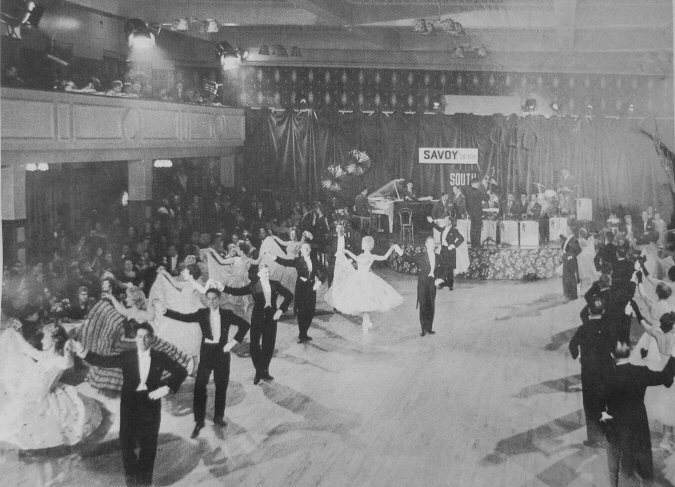
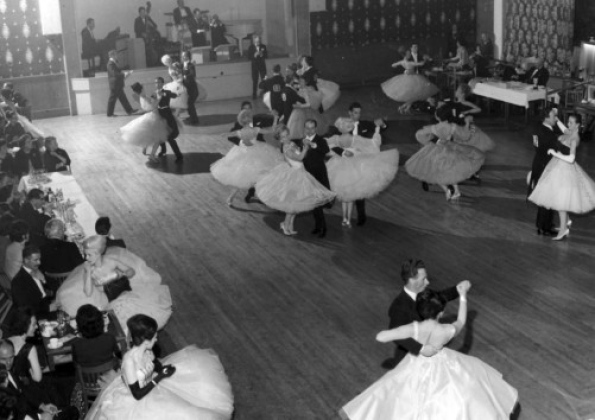
The Squadronaires were a schizophrenic unit, as likely to launch into
a Bob Crosby style big band Dixieland item such as South Rampart Street Parade as a modern jazz version of C Jam Blues, clearly influenced by the Woody Herman Herd. The star musicians were the magnificent trombonist, George Chisholm, agile clarinettist Andy McDevitt, and superbly equipped and vastly experienced trumpeter, Tommy McQuater, and drummer Jock Cummings. master of all drumming styles and meticulous time-keeper.
Vic Lewis was besotted by Stan Kenton, leader of the largest and loudest modern orchestra in the U.S.A. This was fine with us because nothing was more likely to raise the hair on your neck than standing a few feet in front of five trumpets, five trombones and five saxes as they blasted their way through such fortissimo Kenton classics as Intermission Riff, Harlem Holiday and Artistry in Percussion, lacing their programme with local originals like Music For Moderns and Sunday Girl.
The hand's unsung hero was high-note trumpeter Harold Luff, following in the awesome wake of his transatlantic counterpart Maynard Ferguson. The players who caught the public's eye, however, were chortling, snorting trombonist Gordon Langhorn - who later surfaced in the regrettable guise of Don Lang. with his Frantic Five - Kathie Stobart. a tall striking lady who blew a swinging tenor-sax, lively drummer Pete (The) Coleman and multireed master Ronnie Chamberlain, whose alto-sax solos were especially felicitous.
Our Roger once made a play for an attractive girl who was hanging around the bandstand, constantly talking to Chamberlain between numbers. All his hard work came to naught when the girl turned out to be Ronnie's wife.
Excitement was the Vic Lewis keynote but for complete, all-round excellence, charisma and star quality. Ted Heath and His Music were unrivalled. The band was packed with world class instrumentalists - Kenny Baker, arguably the finest British trumpeter of all-time; Jackie Armstrong, a trombonist possessing a mellow, seductive tone; Bobby Pratt, a superlative lead trumpet who played with awesome power; Tommy Whittle, alternatively stomping and lyrical but always creative on tenor-saxophone: mercurial bassist Johnny Hawksworth and his energetic rhythm-section partner. drummer Ronnie Verrall.
The Savoy Ballroom on BBC Television's 'Come Dancing'
BBC Television
8 October
1962
22.15
COME DANCING
for the BBC Inter-Regional Dancing Contest
Organised by Mecca Dancing
Peter West introduces the third heat In the nation-wide amateur ballroom dancing contest between twelve regions for the BBC TELEVISION AWARD and FORMATION TEAM CUP
NORTH LONDON from The Royal,
Tottenham Johnny Howard and his Orchestra
Compere, Judith Chalmers Produced by DONALD MACLEAN
V. THE SOUTH from The Savoy, Southsea
Phil Tate and his Orchestra
Compere, Martin Muncaster Produced by BRIAN JOHNSON
Before a panel of judges nominated by members of the Official Board of Ballroom Dancing Ltd. including the Welsh Alliance
Programme arranged by Eric Morley Directed by Reg Perrin
Executive producer, BARRIE EDGAR
BBC Television
2 December
1963
22.05
COME DANCING
with Peter West
The sixth heat In this year's nation-wide amateur ballroom dancing contest between fourteen regions for the BBC Television Award and Formation Team Cup
NORTH-WEST from The Locarno, Liverpool with Johnny Hilton and his Orchestra
Compere, Geoffrey Wheeler
Television presentation by Ray Lakeland
V.
SOUTH from The Savoy, Southsea with Phil Tate and his Orchestra
Compere, Martin Muncaster
Television presentation by Peter Bale
Before a panel of judges nominated by members of the Official Board of Ballroom Dancing Ltd. including the Welsh Alliance.
Programme arranged by Eric Morley Studio direction by Reg Perrin
Series produced by PHILIP LEWIS
|
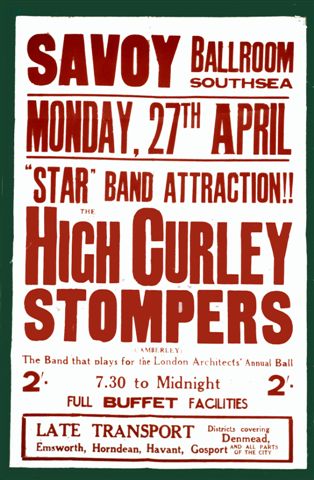
The High Curley Stompers from Camberley played from 1953
|
These are names plucked at random, for the list was almost endless, as was the pleasure imparted by an orchestra that was as comfortable in the commercial Glenn Miller mood as it was in the up-tempo Herman/ Kenton groove. But Ted Heath's trump cards for the less jazz orientated and more romantically inclined among his fans were the three hugely popular vocalists, Dickie Valentine, Lita Roza and Dennis Lotis.
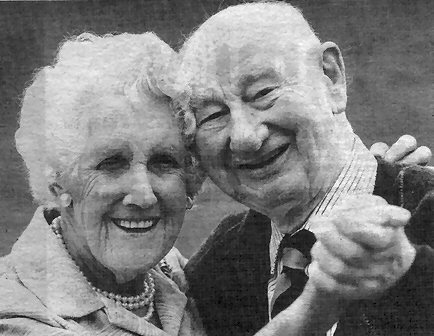
George and Mrs. Turner
|
When the lights went down in the Savoy ballroom and Valentine sang That Lovely Weekend, lulling many a young girl into a receptive frame of mind, you had the perfect excuse to stand behind your partner, arms around her waist, face against her
hair, both of you swaying gently to the music as you stood facing the bandstand. The lights came up for Lita Roza to sing Blacksmith Blues and then the hall was plunged into total darkness, except for the illuminated bongo drums that each musician played as the band thundered into its Concerto for Drums finale to the evening's entertainment.
While the crowd poured into the night and milled around on the pavement, we six would check to ascertain which of us had struck lucky. Those who had failed to "click" merely boarded one of the fleet of late-night trolley buses, lined up beside the Esplanade. The successful members set off with their inamorata for one of the regular haunts of summertime lovers. Some were content to snuggle down on the beach near the South Parade pier or lurk beneath the sea wall,
further along Southsea Esplanade. Roger always opted for the covered shelter facing the bowling green, just off Clarence Esplanade, while Bud and I travelled along that route as far as the Rock Gardens. A secluded bench beside a screen of dense foliage, with the fountain playing gently in the background, provided a pretty seductive setting, I thought.
Comfortably ensconced, the activity commenced with what we called "a necking session," the details of which I would almost certainly exaggerate when I met up with the gang, next day. Simultaneously stimulated and shattered, it was ultimately necessary to dredge up sufficient energy to take your girl home. The buses had long gone, expensive taxis were out of the question and nobody owned a car. You walked. If your luck was in, your new flame lived at a nearby
Southsea address but many's the time I've trudged to Eastney, Old Portsmouth, even Paulsgrove and then had to drag my aching limbs back home to North End.
Yet these were golden times, as we edged our gauche and naive way towards manhood to the accompaniment of the great big bands of the post-war years. So many of life's experiences are pleasureable only in retrospect, clear instances of distance lending enchantment. Those Friday nights at the Savoy were special as they actually happened, the social and musical highlight of each week. Ever since their demise, many ageing romantics have been patiently waiting for the big bands to come back. Of course, they never will, but those of us who lived through their heyday remain profoundly grateful for the music and the place where it was played, the Savoy.
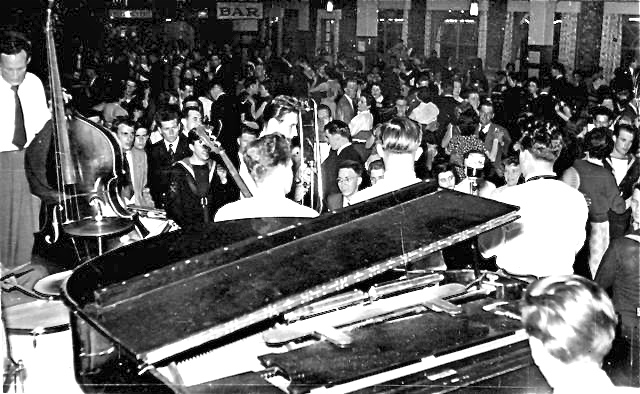
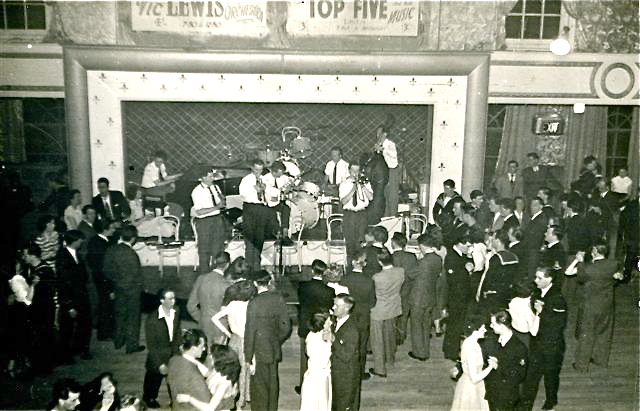
The High Curley Stompers, including Chas McDevitt, from Camberley played from 1953
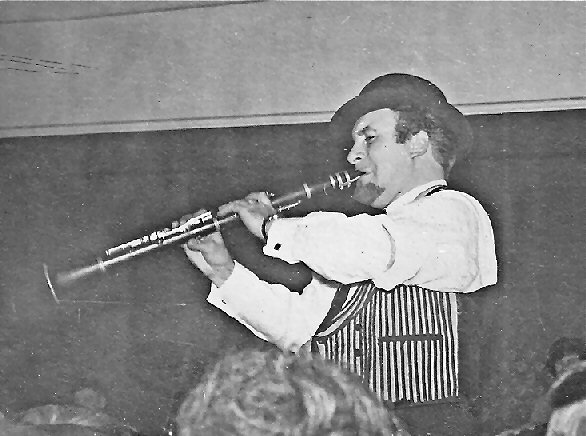
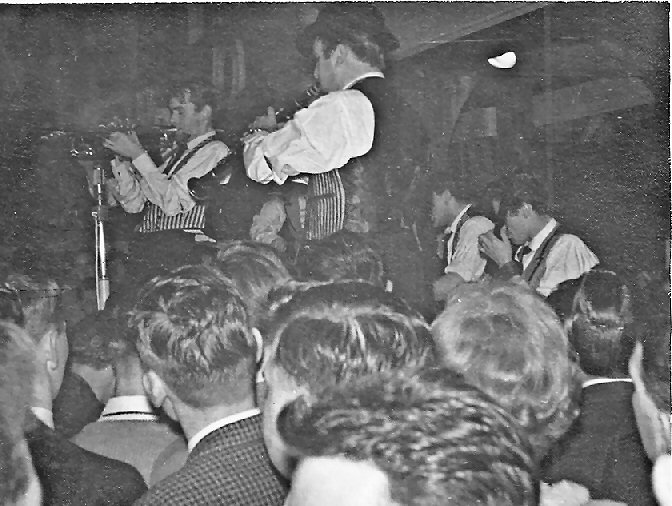
Acker Bilk at the Savoy Ballroom

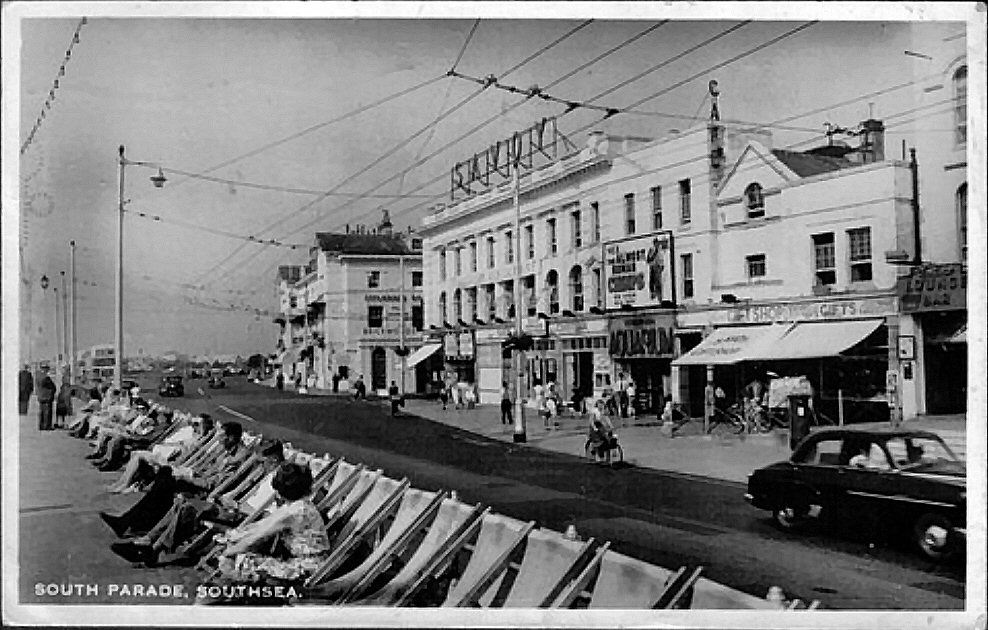
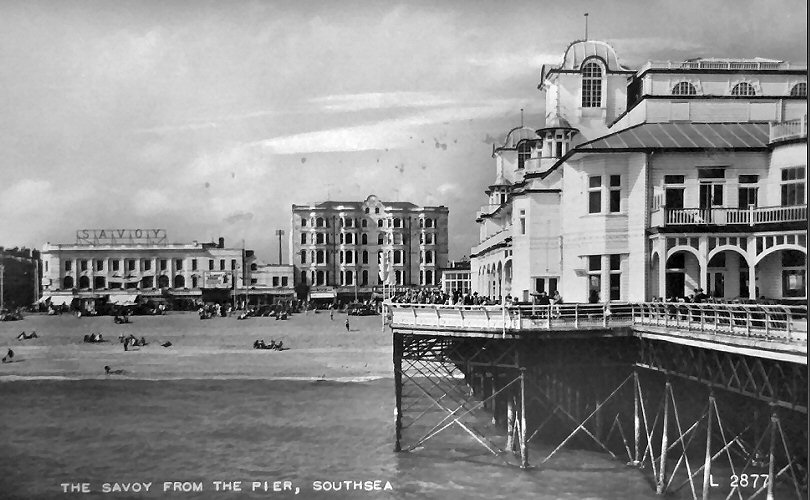
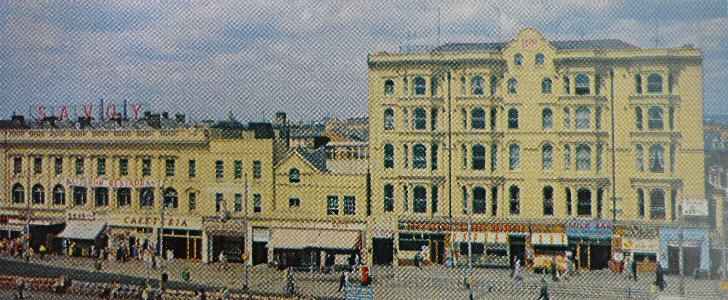

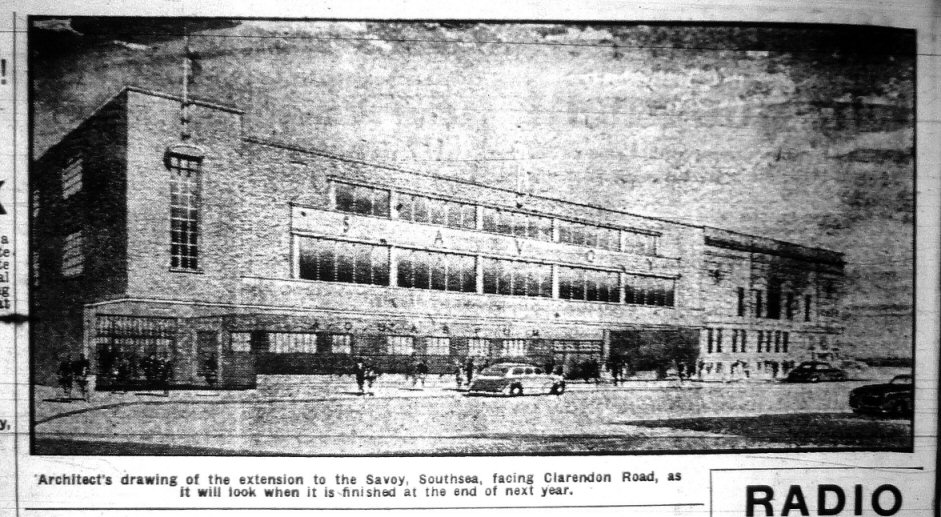
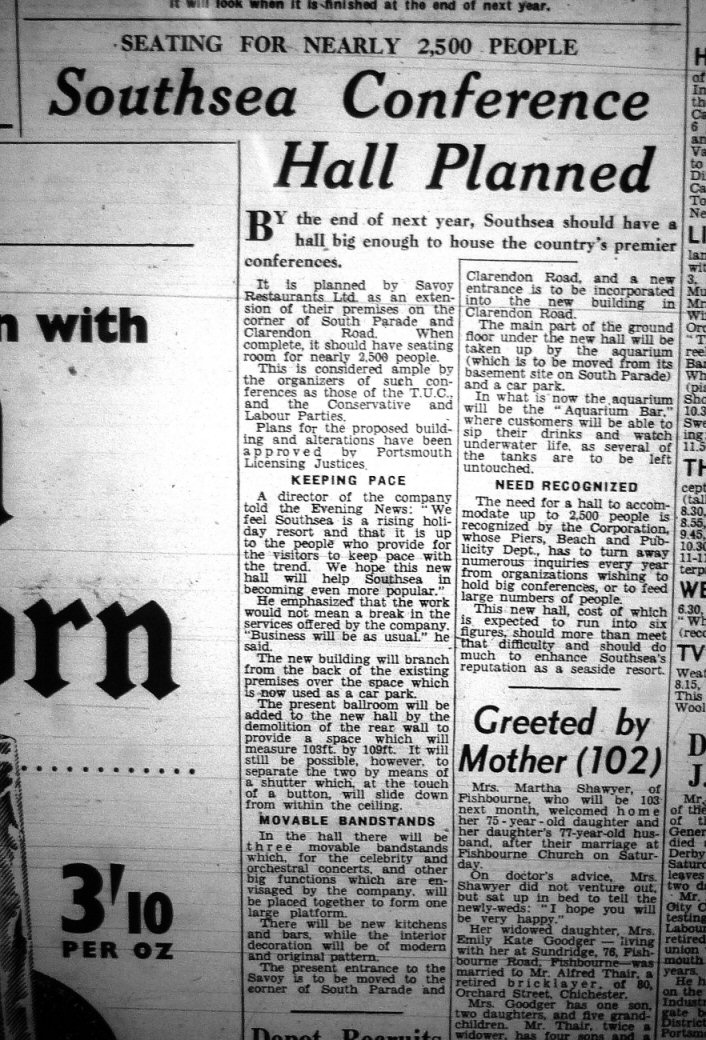
Plans on 8th February 1955 for the enlargment of the Savoy Ballroom Buildings.
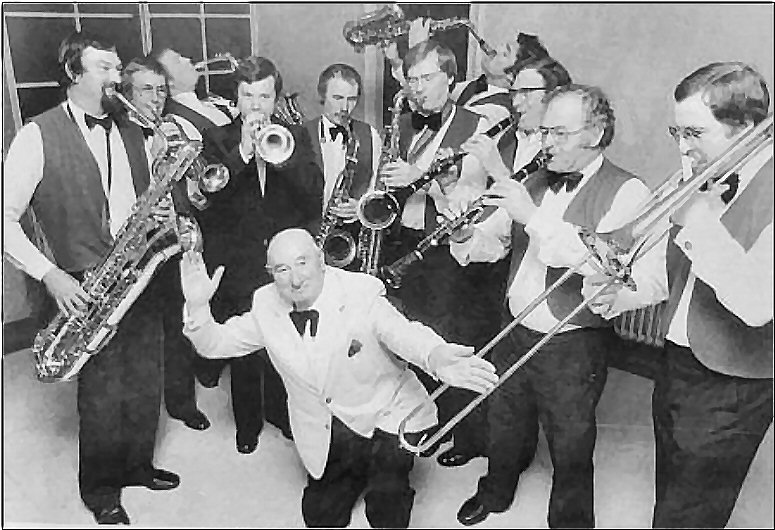
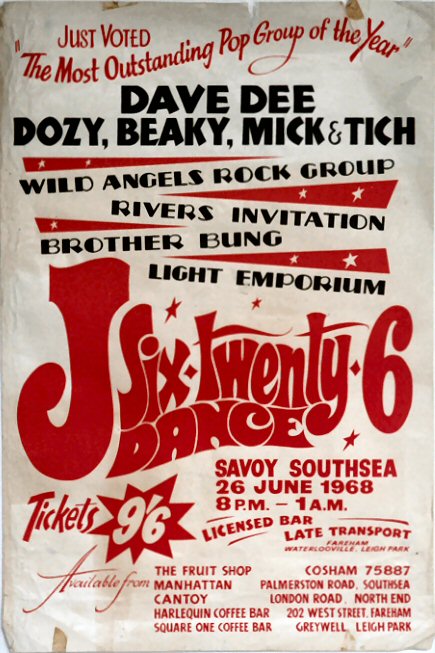
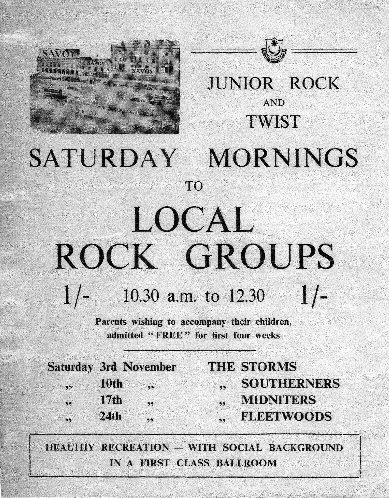
The Savoy Buildings opposite South Parade Pier housed all kinds of delights for holidaymakers in Southsea in the decades after the 2nd World War. There were cafeterias, seafront shops, bars with live music and best of all, upstairs a beautiful ballroom with huge windows overlooking the sea, a balcony and two stages.
But the ballroom did not only attract holidaymakers. During the 1950s in particular, many local people danced away the weekends to the best local and visiting dance bands. Among those who entertained the crowds were the bands of Ted Heath, Joe Loss, Nat Gonella & his Georgians, Johnny Dankworth, John Barry, Eric Delaney, Stan Kenton. The best of the local dance bands also entertained there during midweek or, on the second stage when the bigger acts were in town. These local dance bands were led by Johnny Lyne, Syd Dean and at the Savoy in particular, Benny Freedman - a local music teacher.
The dance bands continued to appear into the 1960s but increasingly interspersed with newer styles of popular music. At the start of that decade ‘Trad' jazz was very popular, especially Acker Bilk who appeared regularly but also Kenny Ball, Chris Barber and Mick Mulligan with George Melly. But the Savoy's manager George Turner was always alert to new trends and he began booking rockers like Gene Vincent, Billy Fury, Marty Wilde, Freddy Cannon and Vince Eagar.
He also spotted the growing popularity of instrumental groups like the Tornadoes and Spotnicks and then the beat groups. In April 1963 his great coup was to present the new sensation the Beatles and a few months later the Rolling Stones. Generally, the Savoy offered the beat and pop acts like the Hollies, the Kinks, Dave Dee (+) and Amen Corner while Gerry & the Pacemakers spent a weekend there including a Saturday morning session at the new Junior Rock & Twist Club - parents admitted!
There were occasional appearances by the new British rhythm & Blues acts (Animals, Yardbirds, Georgie Fame) and a famous Sunday night with the Who (July 1965) but generally these mod favourites appeared at Kimbells or the Birdcage. There were also regular extravaganzas and charity events, often featuring a host of acts entertaining the city's great and good. Many local groups appeared there regularly including Mike Devon & the Diplomats (supporting the Beatles), the Rivals, Barry & the Zodiacs, the Dynamos, the Storms and the Shamrocks. In 1964, Gosport's Brothers Scarlett won the Five Counties Beat Group Talent Contest there.
The list of acts that played there is a very long one and for twenty years the Savoy was at the hub of Pompey's ‘dancing and romancing'. In later years it became a night club - starting with Nero's - before closing its doors. Harry Redknapp bought it and last summer it was demolished, but the memories remain.
Dave Allen
The Savoy Ballroom was bought by Billy Butlin on 19th January 1946. Local man Harry Pearl and Londoner Barney Shine became owners of the Savoy in about 1953/54.
The Savoy building also housed several other 'units'.
The Crystal Lounge was at the far eastern end on the building and on the first floor. In recent years it was known as Joannas.
These cuttings are from the Portsmouth Evening News in June 1960.
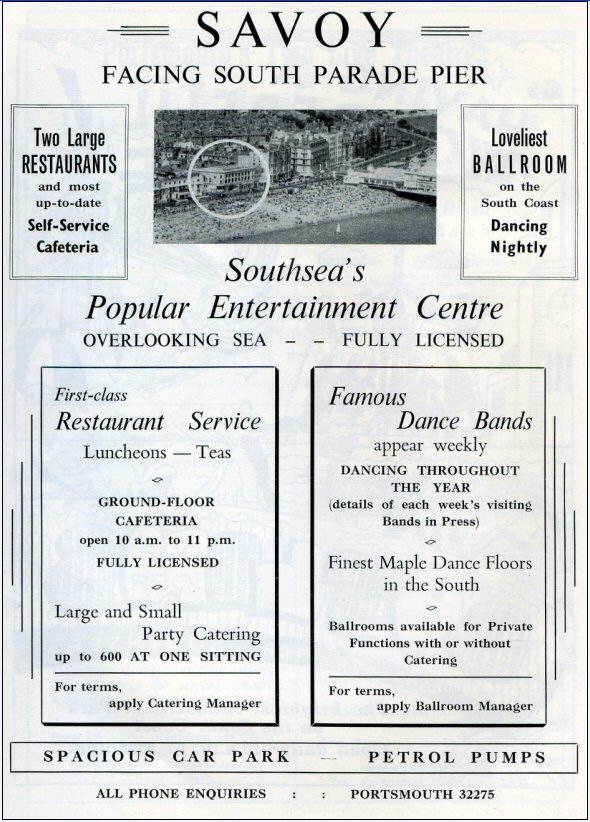
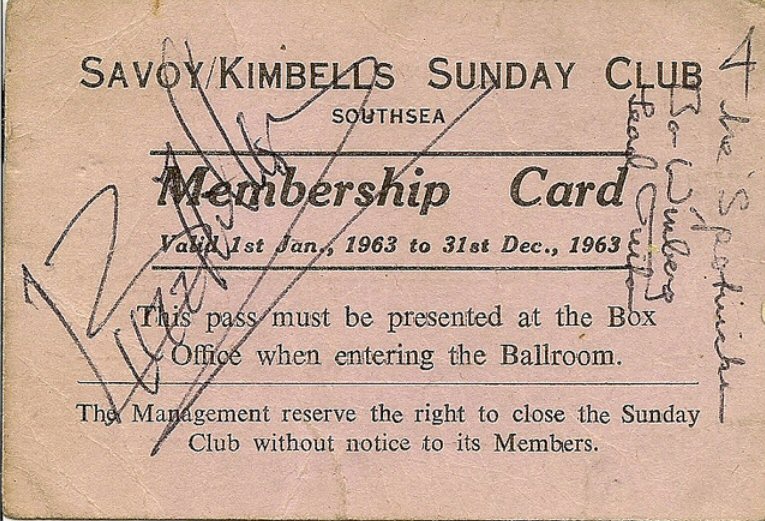
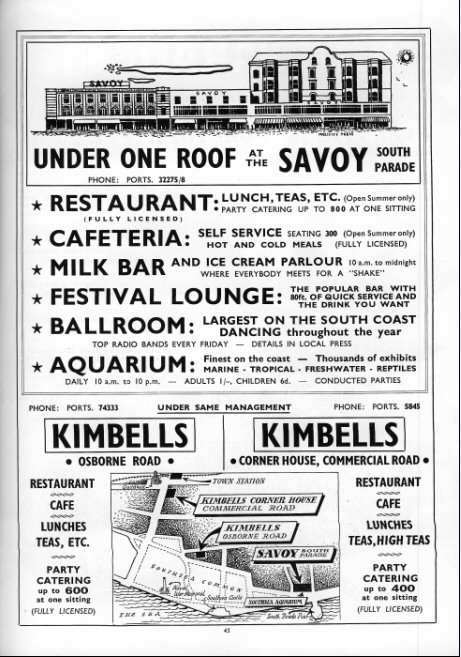
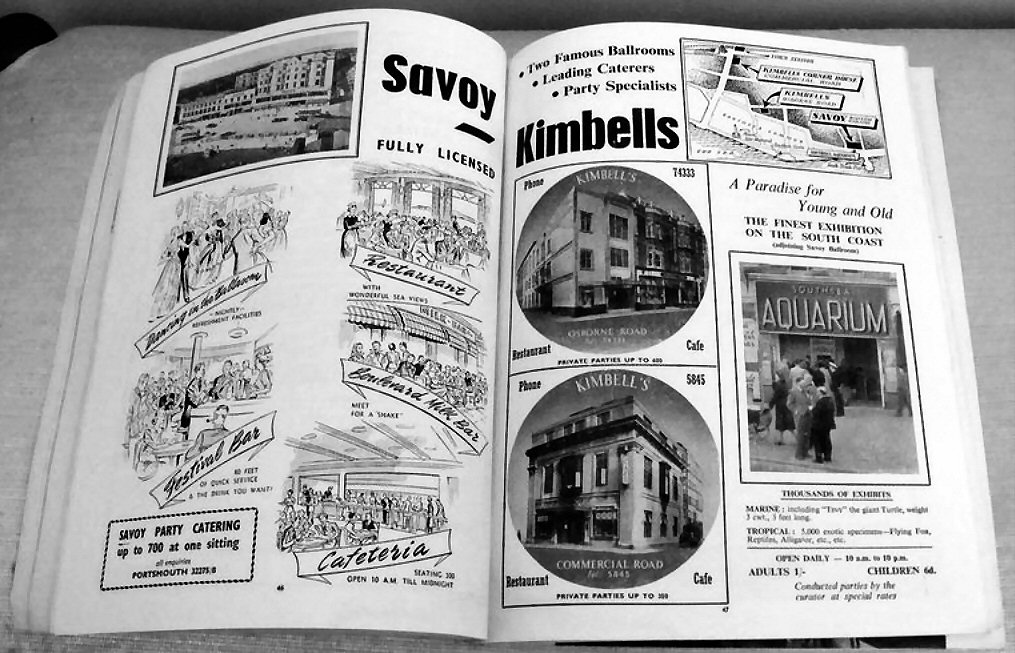
After the Savoy Ballroom?
for the remaining history, Savoy Ballroom/Neros with Pleasurama---- CLICK HERE
|
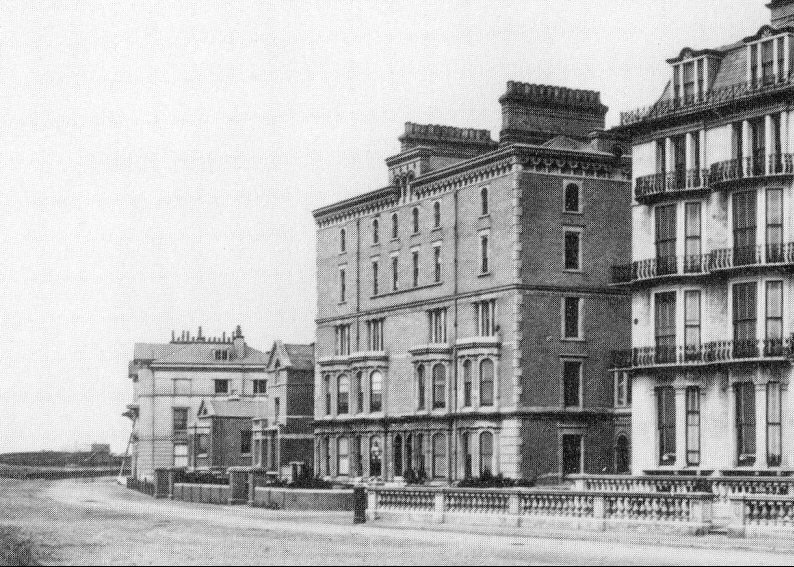
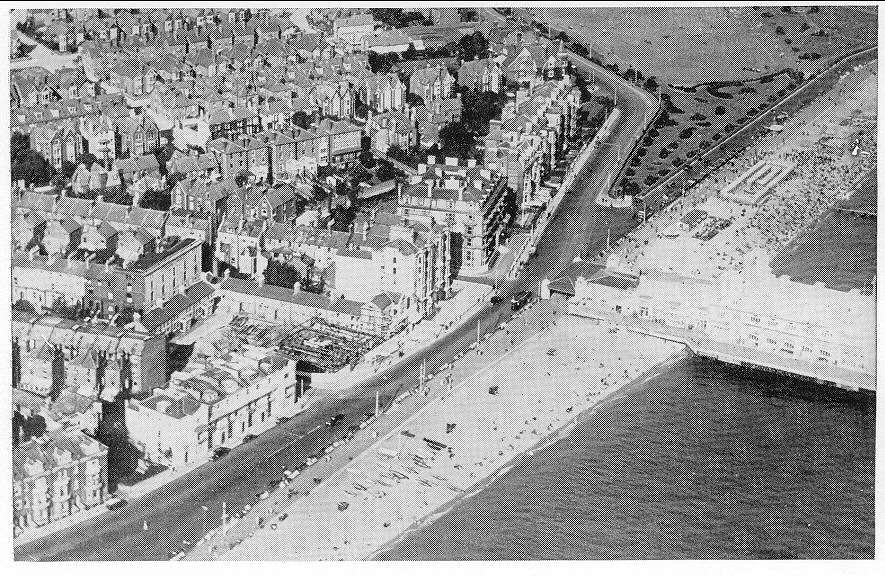

 Sometimes on a warm summer evening, I stand on Southsea's Esplanade, facing what used to be the Savoy Ballroom, and memories of long-gone Friday nights come flooding back, as sharply and clearly defined as Ted Heath's trumpet section.
Sometimes on a warm summer evening, I stand on Southsea's Esplanade, facing what used to be the Savoy Ballroom, and memories of long-gone Friday nights come flooding back, as sharply and clearly defined as Ted Heath's trumpet section.









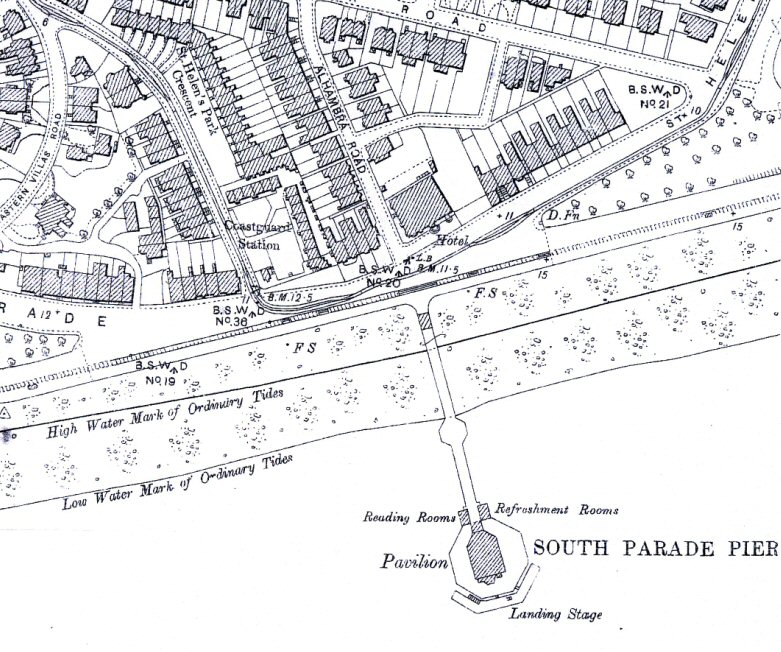
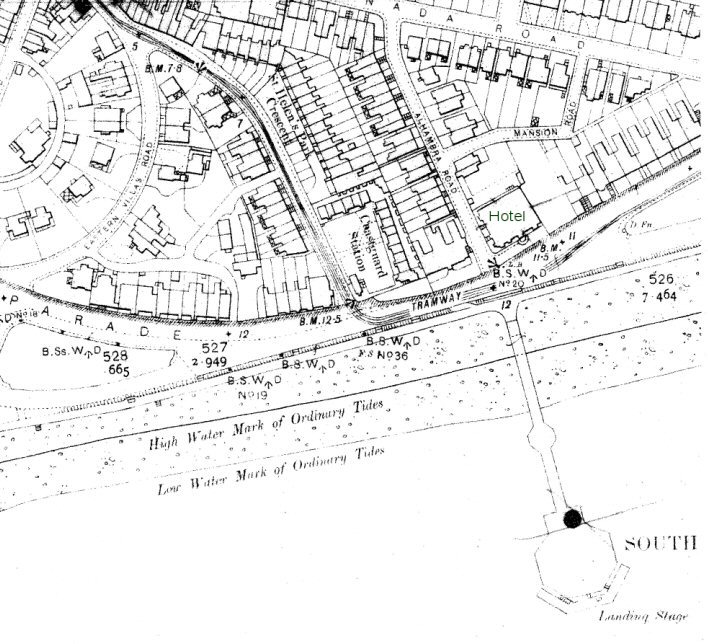
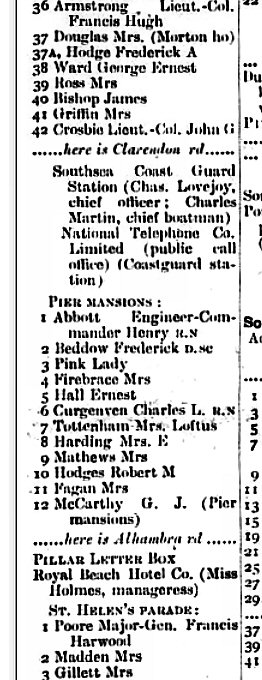
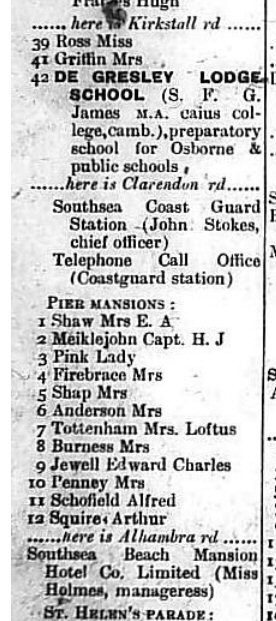
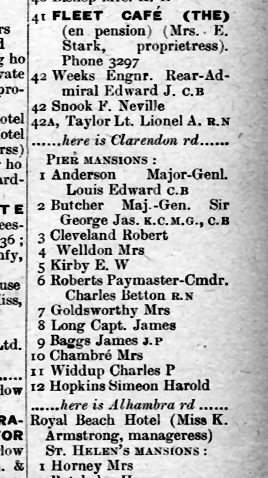
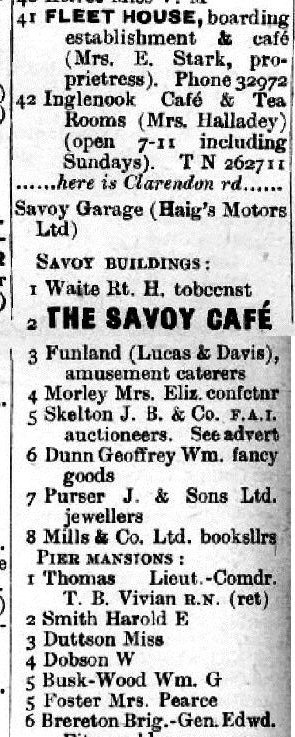
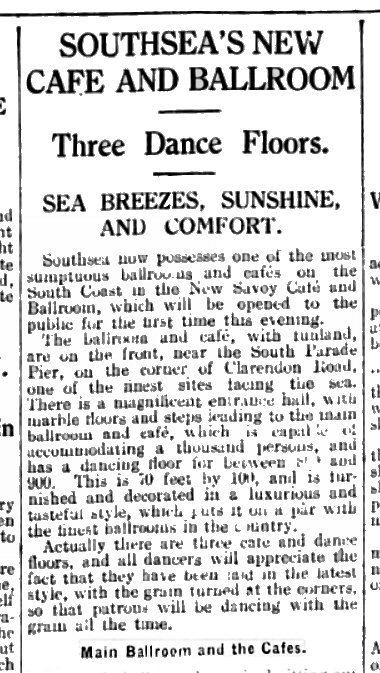
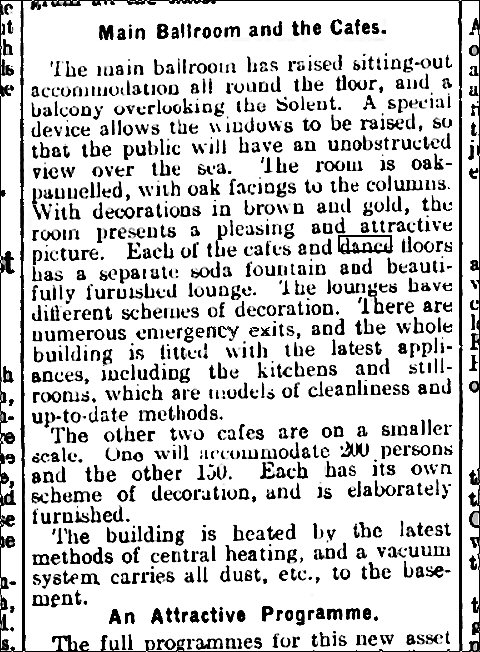
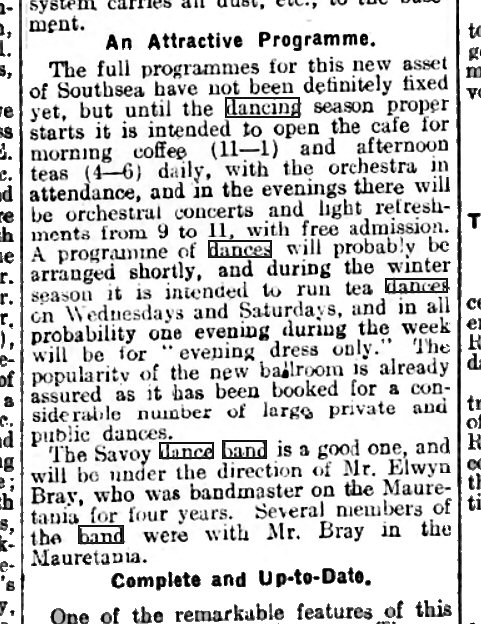


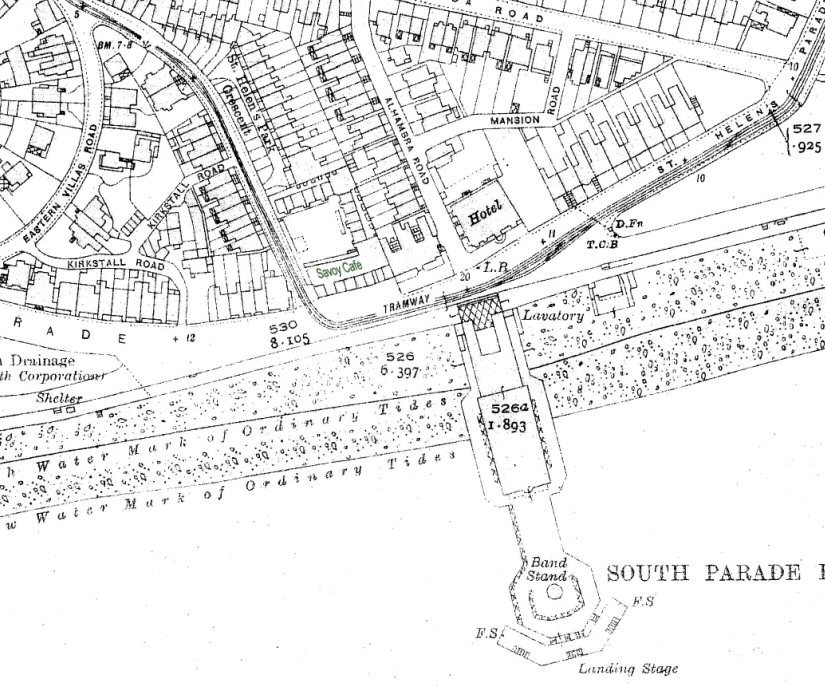
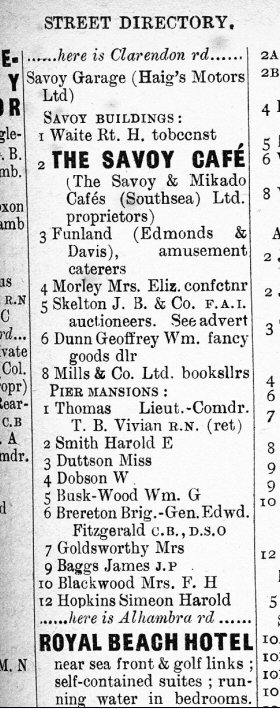
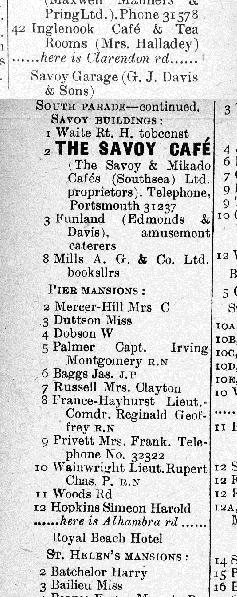
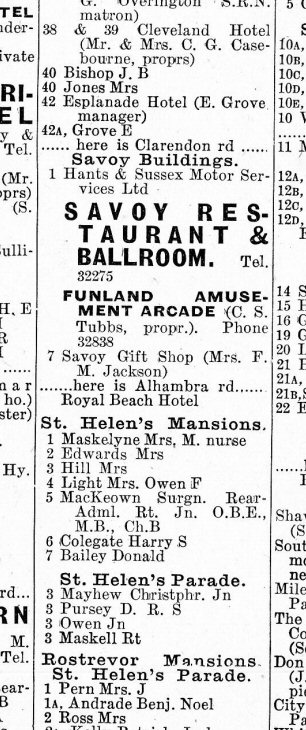

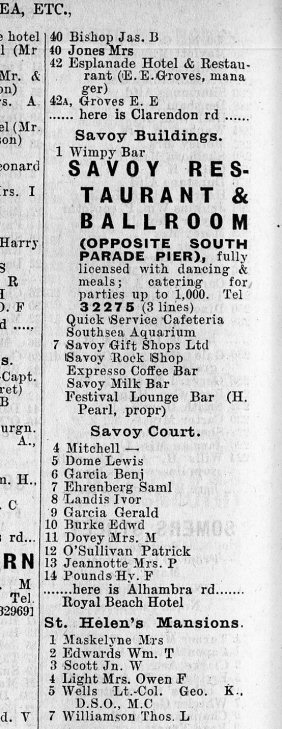
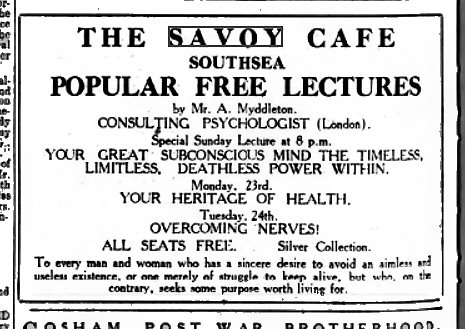
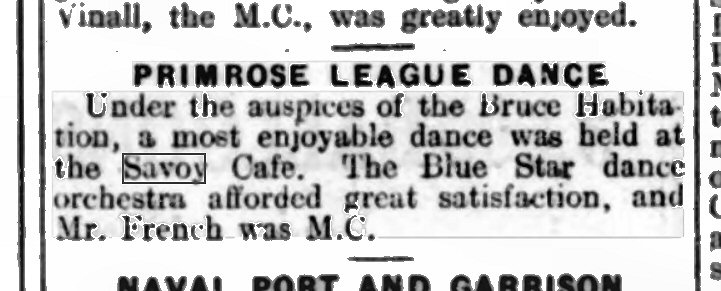
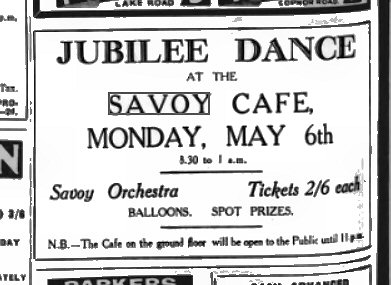
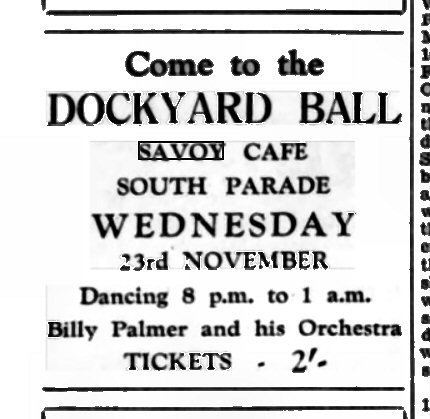
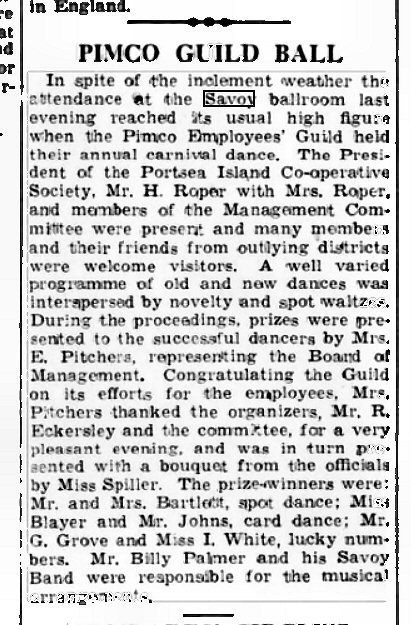
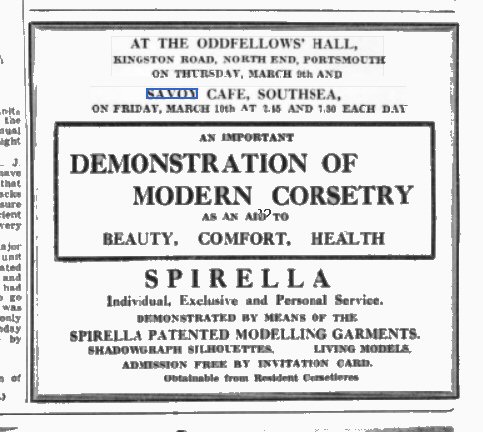
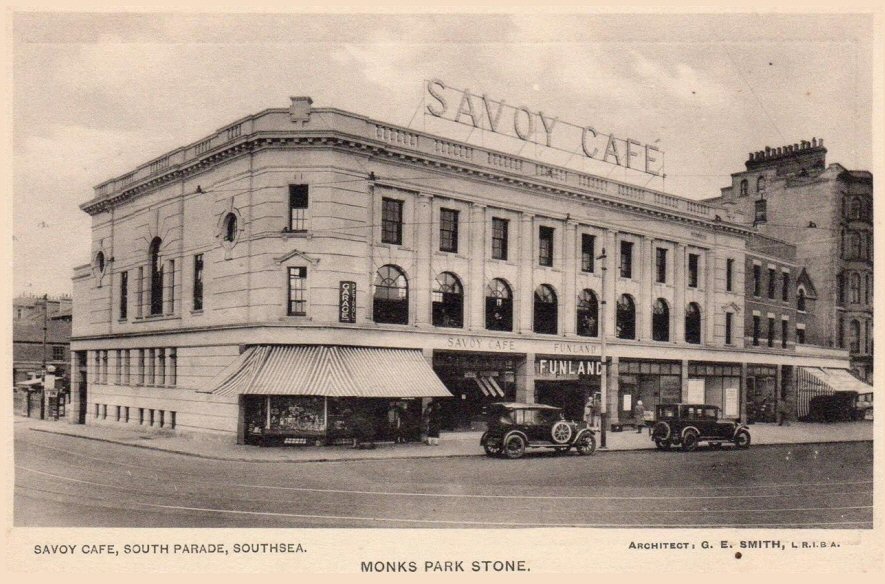

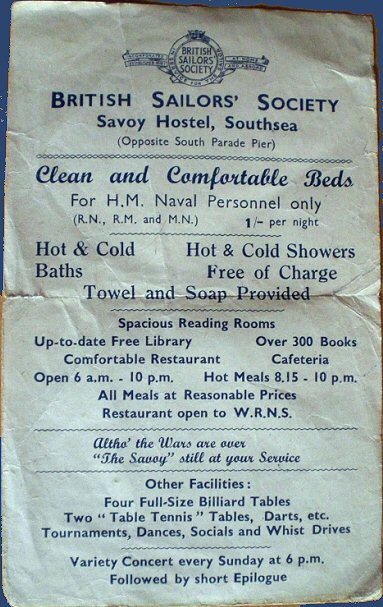
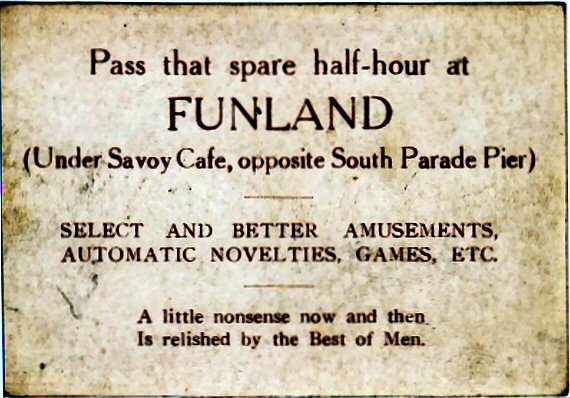
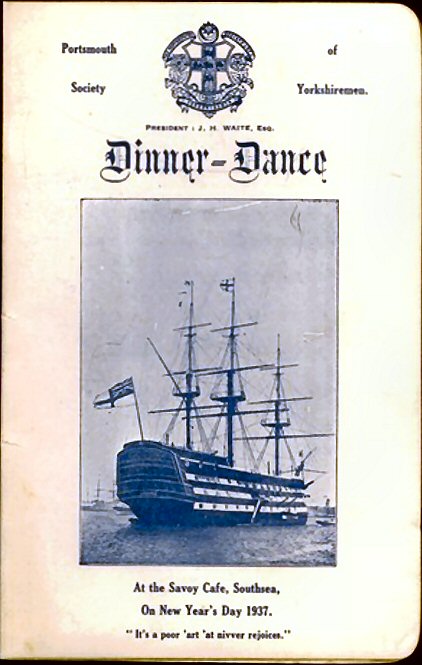
 It wasn't a pretty sight as the evening wore on, the conversations growing louder and more bawdy, the arguments over individual claims to specific "birds" suggesting the possibility of physical confrontation.
It wasn't a pretty sight as the evening wore on, the conversations growing louder and more bawdy, the arguments over individual claims to specific "birds" suggesting the possibility of physical confrontation.










